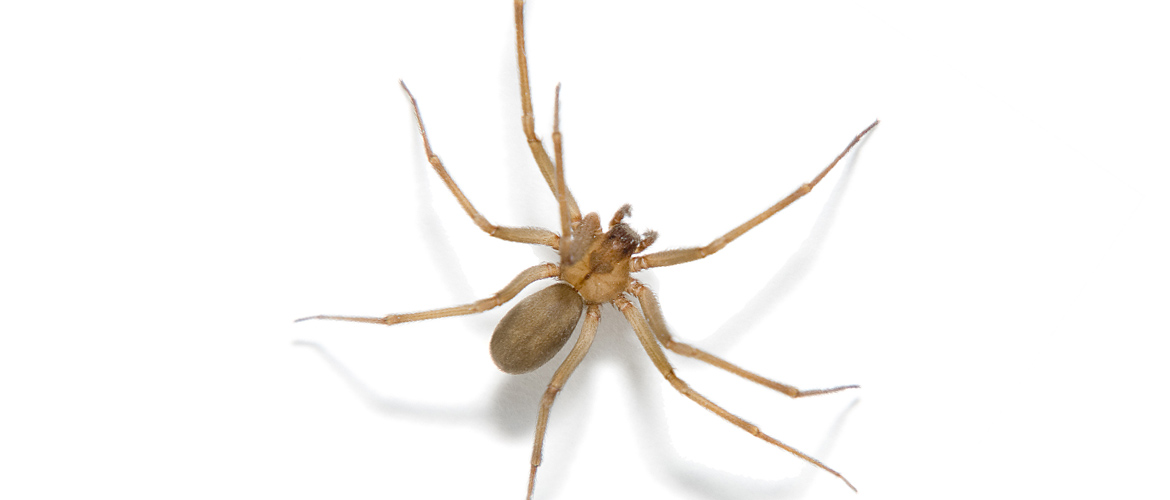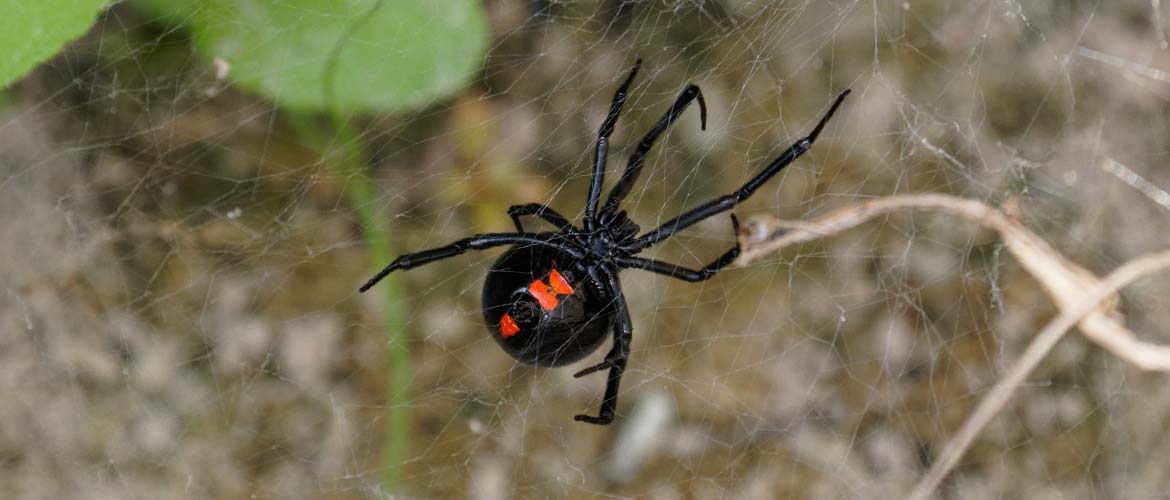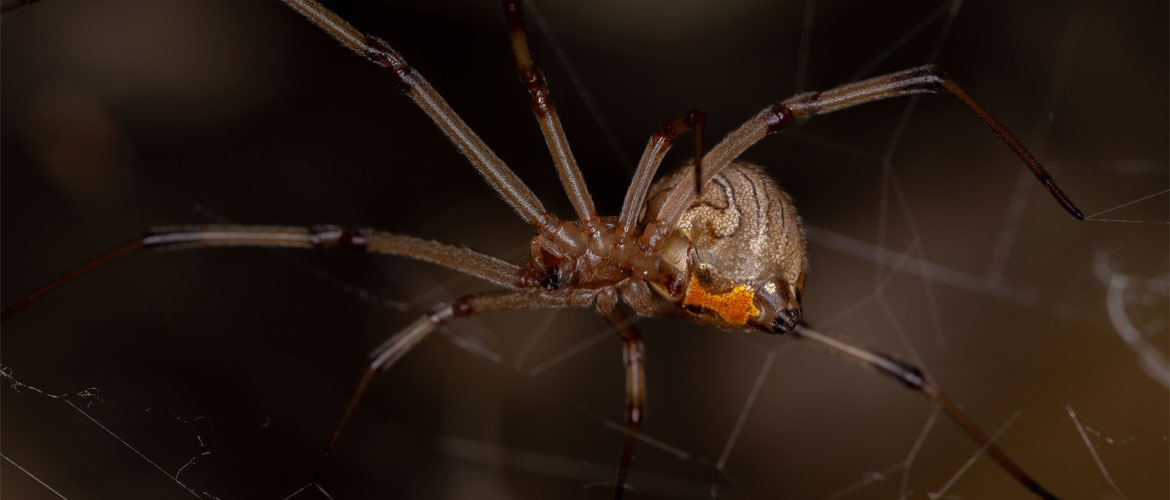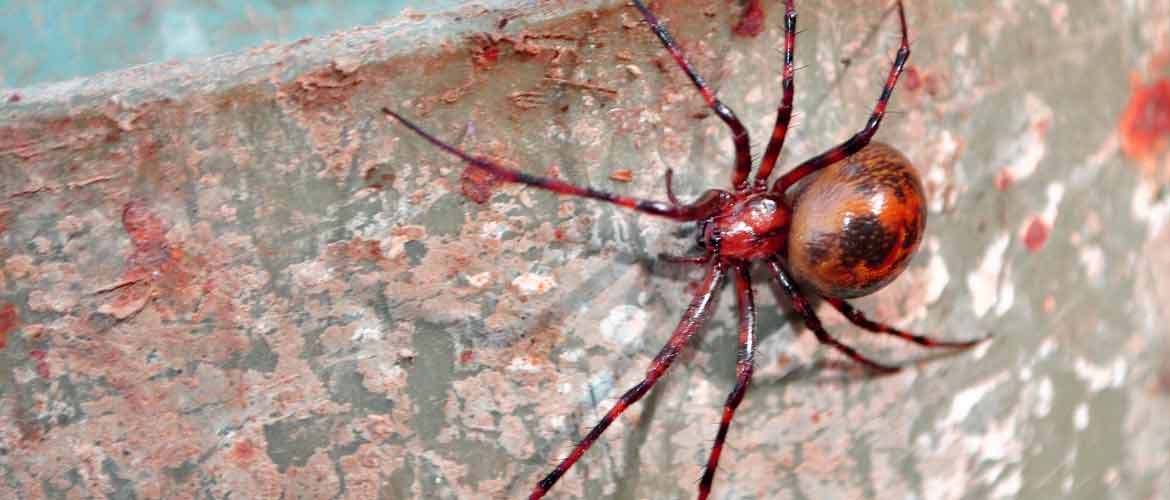April 2, 2024
Spiders, with their eight legs and complex webs, have a unique ability to cause a combination of fascination and fear in people. While most spider bites are harmless, there are certain bites that should never be ignored – like the bite of the black widow and brown recluse spider. These two species, most often found in the United States, have venom that can cause harmful symptoms and lead to complications if not promptly treated. In this blog, we will explore other spider bites that should be on your radar, making sure you are well-informed and prepared to identify and protect yourself.
How Can You Tell if You Were Bitten by a Spider?
It is difficult to determine if a bite is from a spider unless you saw or caught the spider. Many insect bites can cause redness, swelling and itchiness on the skin. If these symptoms become worse or if you experience a reaction throughout your body, it is important to seek medical attention from a health care professional. While it is uncommon to have a severe or deadly reaction to a spider bite, it is still necessary to seek diagnosis and treatment.
get treatment for a spider bite
Concerned about a spider bite? You can visit your neighborhood medical center from 8 to 8.
Brown Recluse Spider

The brown recluse spider is about one inch long and the coloration can vary. Typically, it has a uniform brown or tan color, with a slightly flattened oval-shaped body and long, thin legs. It also has six eyes arranged in pairs rather than the usual eight eyes found in most spiders. It is not an aggressive spider but will attack if trapped or held. Is the brown recluse spider deadly? No deaths have been reported in the U.S. from a brown recluse bite.1
Where Do They Live?These spiders are primarily found in the central and southern regions of the United States, with states like Missouri, Arkansas, Kansas, Oklahoma and Texas being their prime habitats. It is known for its reclusive behavior and prefers dark, undisturbed areas such as closets, basements and woodpiles.
Stages of a Brown Recluse Bite. If bitten by a brown recluse spider, the bite typically progresses through several stages. Initially, there may be minimal pain or a mild stinging sensation. Over the next few hours, the bite site may develop a red, swollen area surrounded by a pale ring. As time passes, the affected area may become increasingly tender and form a blister filled with fluid. In some cases, the bite can lead to tissue damage, requiring medical attention.2
In some cases, individuals may experience a severe, systemic reaction to the bite, characterized by the following signs and symptoms:
- Fever and chills.
- A rash consisting of tiny, flat purple and red spots that spreads throughout the body.
- Nausea or vomiting.
- Joint pain.
It is important to note that these symptoms can vary from person to person, and seeking medical attention is crucial for proper diagnosis and treatment.
How to Treat a Brown Recluse Spider Bite.Identifying a brown recluse spider bite can be challenging, particularly because the bite itself is often painless and symptoms may not appear until hours later. Avoid itching the bite and do not attempt to extract venom.3
- Promptly clean the bite area with soap and water.
- Apply a cold compress or damp cloth to reduce swelling.
- Elevate the affected area, if possible.
- Seek medical attention for severe symptoms (as listed above).
Black Widow Spider

Black widow spider bites are dangerous, especially for young children and the elderly. These spiders are known for their unique appearance. Adult female black widows are shiny black with a round abdomen that has a red hourglass-shaped marking underneath. This red marking is a key feature of the species. Female black widows can be 0.5 to 1.5 inches (1.3 to 3.8 cm) long. Male black widows, however, are smaller and less noticeable, often with lighter coloring and less distinct markings. They may have red or white spots on their abdomen instead of the hourglass shape.
Is the Black Widow Spider Deadly? While their bites can be painful and cause severe symptoms, they are rarely deadly. However, individuals with compromised immune systems or severe allergic reactions may experience more severe effects.
Where Do They Live? Black widow spiders can be found in various regions across the United States, including the southern and western parts of the country. Many bites occur in rural and suburban areas, with a higher incidence between the months of April and October. They tend to prefer dark, secluded areas such as garages, sheds and woodpiles. Exercise caution when reaching into these spaces to avoid accidental encounters. These spiders typically bite in self-defense when their webs are disturbed.
Stages of a Black Widow Bite.If bitten by a black widow spider, the bite may progress through several stages. Initially, there may be immediate pain or a pinprick sensation at the bite site. You will also see one or two small fang marks, like tiny red spots. Symptoms usually start within 20 minutes to one hour after the bite.
In some cases, severe symptoms appear within 30 to 60 minutes. These include:
- Muscle cramps and spasms that start near the bite and then spread and increase in severity for 6 to 12 hours.
- Seizures.
- Chills, fever, nausea or vomiting.
- Sweating.
- Severe belly, back or chest pain.
- Headache.
- Severe high blood pressure.
How to Treat a Black Widow Spider Bite. The decision to seek emergency care should be made early. If someone bitten by a black widow spider experience more than minor pain or exhibits symptoms affecting their entire body, it is crucial to seek immediate care at the nearest hospital's emergency department.
Brown Widow Spider

The brown widow spider is smaller and lighter in color compared to the black widow spider, and it poses less danger to humans. It can range in color from tan to dark brown and is characterized by a yellow or orange hourglass marking on its abdomen.4
Where Do They Live?They are not native to the United States and are considered invasive. The brown widow is now found in warm climates, including various states in the U.S. including Florida, Texas and recently California. Brown widow spiders prefer secluded, woody areas just outside urban regions. They thrive in dark places like empty pots, garages, woodpiles, patio furniture and abandoned cars. Unlike black widows, brown widows tend to favor more exposed locations.4
Stages of a Brown Widow Spider Bite.While its bites are not as severe as those of black widows, they can still cause significant pain. Typically, the pain is localized to the bite area. Although rare, full-body symptoms such as nausea, muscle pain and other systemic effects can occur.
How to Treat a Brown Widow Spider Bite.In some cases, a person bitten by a brown widow spider may not realize it or may mistake it for a bite from another type of bug. The initial symptoms can be like those of other house spider bites, including pain and the appearance of a red spot at the bite site.
Although brown widow spider bites can be painful, they are usually not dangerous. It is important to watch your symptoms closely and seek medical help if necessary. If you are in doubt or experiencing severe symptoms, do not hesitate to contact a health care professional for guidance and treatment.
Red Widow Spider

As the name suggests, the Red Widow Spider is known for its vibrant red coloration. The females have a shiny, bright red abdomen with a distinctive hourglass-shaped marking on the underside. The males, on the other hand, are usually black or dark brown with red markings on their abdomen. Females are almost double the size of males.5
Where Do They Live? Red widow spiders are primarily found in the southeastern United States, particularly in Florida. They tend to inhabit palmetto bushes, low-lying vegetation and other warm, humid areas.
Stages of a Red Widow Bite. The bite may progress through several stages. Initially, there may be immediate pain or a pinprick sensation at the bite site. Over the next few hours, symptoms may include localized pain, redness and swelling.
How to Treat a Red Widow Spider Bite.If you've encountered a red widow spider and suspect a bite, it's essential to take prompt action. Gently wash the affected area with mild soap and water to clean the wound and prevent infection. Apply a cool compress over the bite to help reduce pain and swelling. If possible, elevate the bitten area to further aid in reducing swelling. Monitor the bite for any signs of worsening or infection.
Wolf Spider

Wolf spiders are athletic hunters that do not rely on spinning webs to catch their prey. Wolf spiders are known for their agility and swiftness due to their long legs. They have a sturdy body structure and come in assorted colors, such as gray, brown, black, or tan and may have dark markings.6
Where Do They Live?Wolf spiders are highly adaptable and found in many regions across the U.S., including wet coastal forests, alpine meadows, shrublands, woodlands, suburban gardens and houses.
Stages of a Wolf Spider Bite. Wolf spiders are usually harmless to humans, though their bites may cause temporary pain, swelling and itching. Allergic reactions to their venom are possible but rare. Symptoms typically subside within minutes to a few days. Medical treatment may be necessary for spider bites if you experience cramping or tight muscles, headache, dizziness, rash spreading from the bite with itching, sweating, nausea or vomiting, fever, weakness or shaking.
How to Treat a Wolf Spider Bite. Clean the wound and prevent infection by carefully washing the affected area with mild soap and water. To minimize pain and swelling, use a cold compress on the bite. Elevate the injured area to help decrease swelling. Monitor the bite for any signs of worsening or infection. The bite typically heals within a few days. See a health care provider immediately if it worsens or if there are unusual symptoms.
Spider bites can be dangerous, and it's important to seek emergency care in the following situations:
- If you are a child, older adult or person with cardiovascular problems.
- Experiencing cramping or having tight muscles around the bite, headache or feeling dizzy. A rash that spreads outward from the site of the bite and may include itching that spreads, sweating whether you feel hot or cold, nausea or vomiting, fever, weakness or uncontrollable shaking.
- If you have reason to believe that you were bitten by a widow or brown recluse spider.
While most spider bites only result in minor discomfort, some can be more severe, particularly if you have an allergy to the venom. Spiders have ways of protecting themselves and their environment, whether you're on a hiking trip or in your own yard. They will typically not bother you if you do not disturb them, but it is important to know what signs to watch out for. If you require treatment for a spider bite, do not hesitate to visit one of our local medical facilities where our team of medical professionals will be glad to help you recover and feel better.
References:
1 Journal of Integrated Pest Management:Integrated Pest Management of the Brown Recluse Spider. Last updated January 2018. Accessed January 30, 2024
2 National Library of Medicine. Poisonous Spiders: Bites, Symptoms, and Treatment. Accessed January 30, 2024
3 American Academy of Pediatrics (AAP).Spider Bites. Accessed January 30, 2024
4 University Of Florida IFAS:Common Name: Brown Widow Spider. Accessed January 30, 2024
5 Spider Identifications: Widow.Accessed January 30, 2024
6 National Geographic:Wolf Spider.Accessed January 30, 2024
7 Columbia University:Black Widow Spider Bite. Accessed January 30, 2024
8 CDC: Types of Venomous Spiders. Last Updated May 31, 2018. Accessed January 30, 2024
9 National Library of Medicine.Poisonous Spiders: Bites, Symptoms, and Treatment.Accessed January 30, 2024
